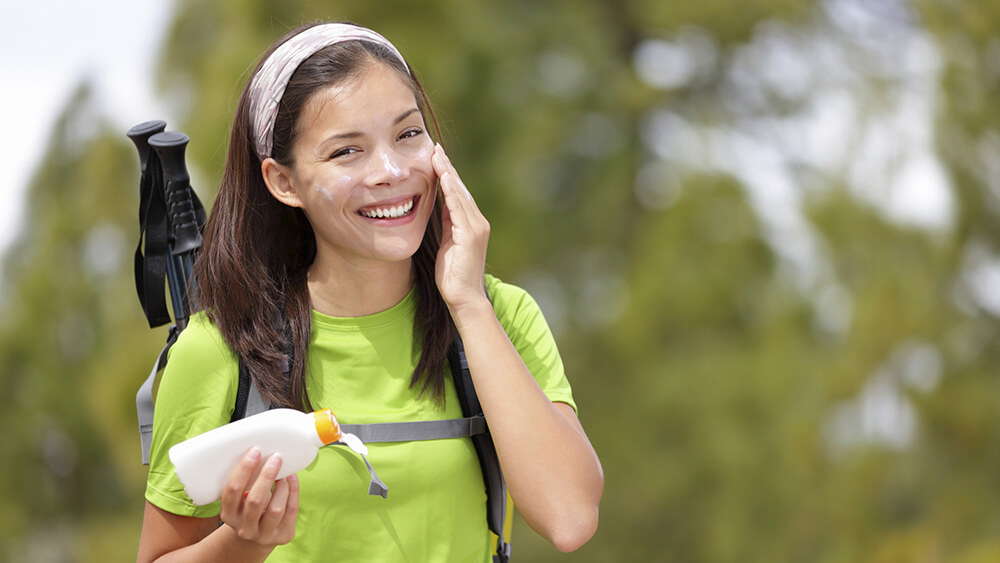
Your skin is the body’s largest organ. It protects against heat, sunlight, injuries, and infection. Yet, some people don’t consider protecting the skin we have. It is very important to take good and proper care of your skin.
The importance to safeguarding your skin while in the sun is becoming more obvious through the years, based on several studies linking overexposure towards the sun with cancer of the skin. The dangerous ultraviolet sun rays from both sun and indoor tanning “sunlamps” may cause a number of other complications besides cancer of the skin – for example eye problems, a weakened defense mechanisms, dark spots, wrinkles, and leather-like skin.
Put on proper clothing
Putting on clothing which will safeguard the skin from the dangerous ultraviolet sun rays is essential. Protective clothing like long-sleeved shirts and pants are great examples. Also, make sure to safeguard your head and eyes by having a hat and ultraviolet-resistant shades. You can become a victim of sun-damage on a cloudy day and in the wintertime, so dress accordingly throughout the year.
Sunburns considerably increase a person’s chance of developing skin cancer. It’s particularly important that children be kept safe from sunburns as well.
Stay In the Shade
Avoid the sun, if at all possible, between peak daylight hours, which, based on the Centers for Disease Control (CDC) and also the World Health Organization (WHO), are between 10 a.m. and 4 p.m. Look for shade, or help make your own shade with protective clothing – together with a broad-brimmed hat, for instance.
Use extreme care when near reflective surfaces, like water, snow, and sand. Building windows can reflect the harmful rays from the sun. That may increase your risk of sunburn, even when you’re in a shady place. Be sure to use extreme care when at greater altitudes as well. You can have more ultraviolet exposure at higher altitudes, because there’s less atmosphere to soak up ultraviolet radiation.
Apply Broad-Spectrum Sun Block
Generously apply broad-spectrum sun block to cover all uncovered skin. The “broad spectrum” variety protects against overexposure to ultraviolet A (UVA) and ultraviolet B (UVB) sun rays. The Food and Drug Administration recommends using sunscreens that aren’t only broad spectrum, but also have a sun-protection factor (SPF) value with a minimum of 15 for defense against sun-caused skin problems.
Even when a sun block is called “water-resistant,” it should be reapplied during the day, especially after sweating or swimming. To stay safe, apply sun block for a price of 1 ounce every two hours. Based on what parts of the body requires coverage, a complete-day (six-hour) outing could require one whole tube of sun block.
Seek shade while outdoors to guarantee the smallest amount of dangerous ultraviolet radiation exposure. When applying sun block make sure to reapply to any or all uncovered skin a minimum of twenty minutes prior to going outdoors. Reapply sun block every two hours, even on cloudy days, and after swimming or sweating.

Protecting Your Vision
Ultraviolet sun rays may also penetrate the structures of the eyes and cause cell damage. Based on the CDC, a few of the more prevalent sun-related vision problems include cataracts, macular degeneration, and pterygium (non-tumor from the conjunctiva that may obstruct vision).
To safeguard your eyesight, put on a large-brimmed hat that keeps your eyes and face shaded while in the sun. You should also put on wrap-around style sunglass with 99 or greater ultraviolet block. Effective sunglasses should block glare, block 99 to 100% of ultraviolet sun rays, and also have a wraparound contour to safeguard your eyes from most angles.
Take Note of the Ultraviolet Index
When planning your outside activities, you are able to choose how much sun-protection you’ll need by examining the Ecological Protection Agency’s (EPA) ultraviolet index. This index measures the daily concentration of ultraviolet sun rays coming from the sun on the proportions of 1 to 11. A minimal ultraviolet index requires minimal protection, whereas a higher ultraviolet index requires maximum protection.
Request an Appointment
Please note we are seeing patients by appointment only, including optical. Call 231.739.9009
or click here.





